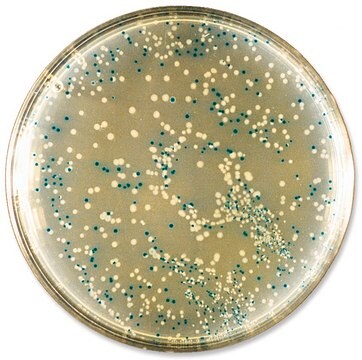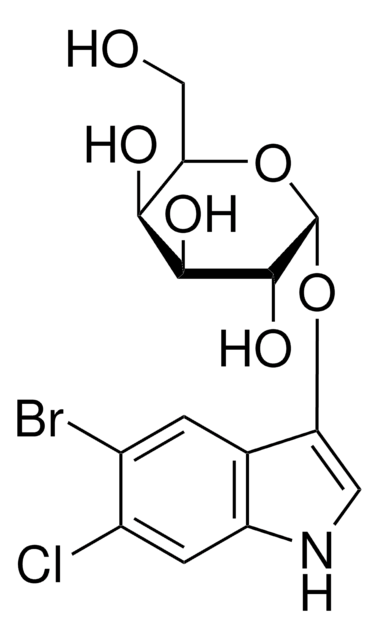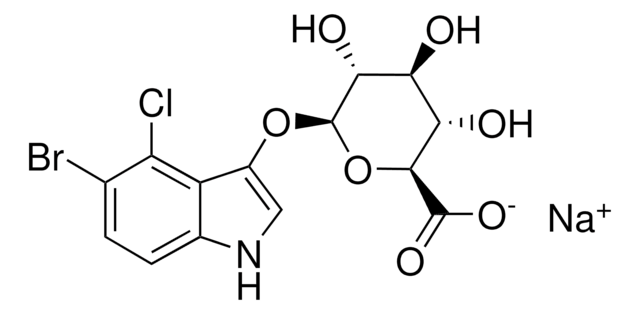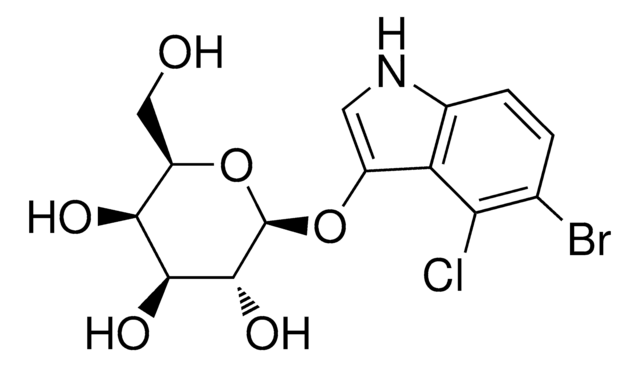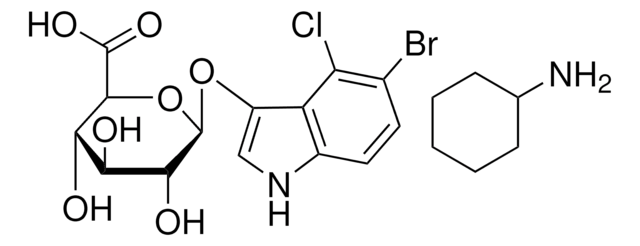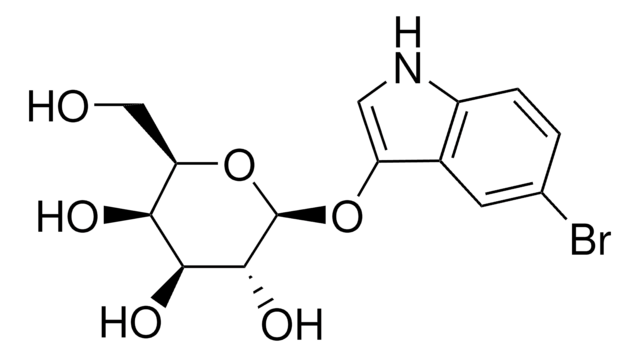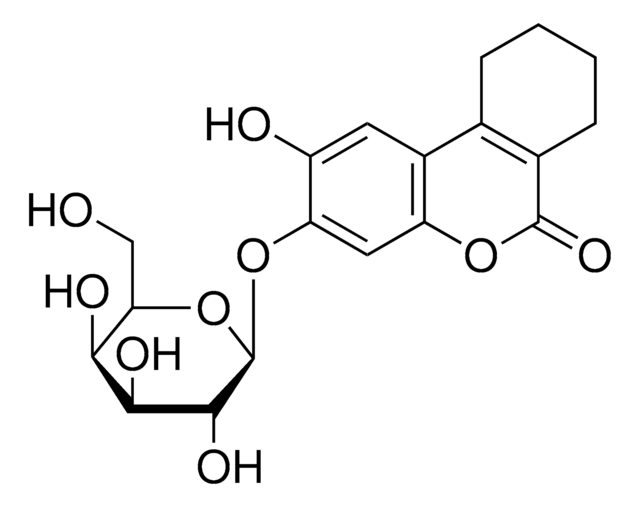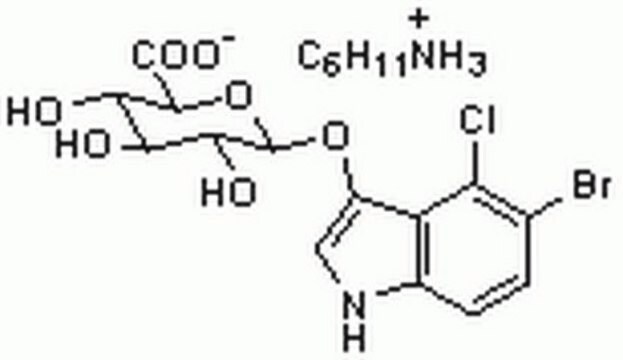Kluczowe dokumenty
B6650
X-GlcA
reagent for selection of recombinant bacterial clones
Synonim(y):
5-Bromo-4-chloro-3-indolyl β-D-glucuronide cyclohexylammonium salt, X-GlcA, X-glucuronide CHA salt
About This Item
Polecane produkty
klasa czystości
Molecular Biology Reagent
for molecular biology
Poziom jakości
sterylność
non-sterile
Próba
≥98% (TLC)
Postać
powder
metody
nucleic acid detection: suitable
rozpuszczalność
DMF: soluble
przydatność
suitable for β-galactosidase test
temp. przechowywania
−20°C
ciąg SMILES
NC1CCCCC1.O[C@@H]2[C@@H](O)[C@@H](O[C@@H]([C@H]2O)C(O)=O)Oc3c[nH]c4ccc(Br)c(Cl)c34
InChI
1S/C14H13BrClNO7.C6H13N/c15-4-1-2-5-7(8(4)16)6(3-17-5)23-14-11(20)9(18)10(19)12(24-14)13(21)22;7-6-4-2-1-3-5-6/h1-3,9-12,14,17-20H,(H,21,22);6H,1-5,7H2/t9-,10-,11+,12-,14+;/m0./s1
Klucz InChI
JXCKZXHCJOVIAV-CYRSAHDMSA-N
Szukasz podobnych produktów? Odwiedź Przewodnik dotyczący porównywania produktów
Opis ogólny
Zastosowanie
X-GlcA has been used in histochemical staining of root sections for light microscopic observation.
Zasada
produkt powiązany
Certyfikaty analizy (CoA)
Poszukaj Certyfikaty analizy (CoA), wpisując numer partii/serii produktów. Numery serii i partii można znaleźć na etykiecie produktu po słowach „seria” lub „partia”.
Masz już ten produkt?
Dokumenty związane z niedawno zakupionymi produktami zostały zamieszczone w Bibliotece dokumentów.
Klienci oglądali również te produkty
Produkty
Today, diverse studies report the benefits of probiotics, such as inhibitory effects on pathogens, aid in the management or prevention of chronic intestinal inflammatory diseases or atopic syndromes, and support to the immune system. Potential beneficial applications abound, researchers continue to evaluate the effictiveness and clarify the mechanisms of action of probiotics.
Nasz zespół naukowców ma doświadczenie we wszystkich obszarach badań, w tym w naukach przyrodniczych, materiałoznawstwie, syntezie chemicznej, chromatografii, analityce i wielu innych dziedzinach.
Skontaktuj się z zespołem ds. pomocy technicznej